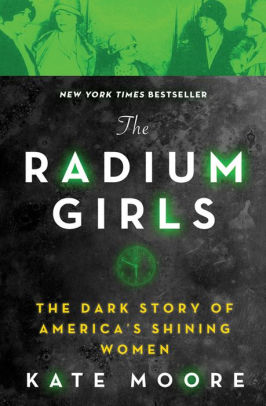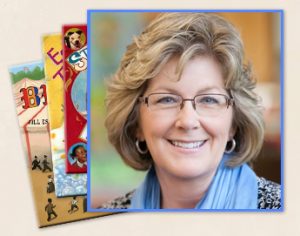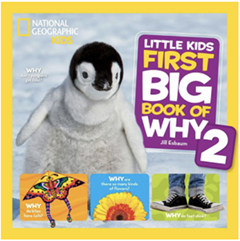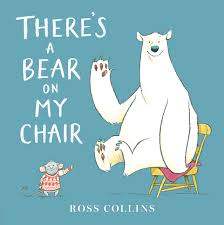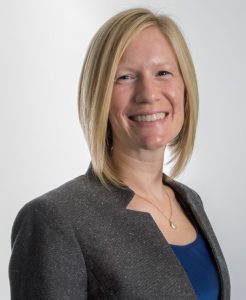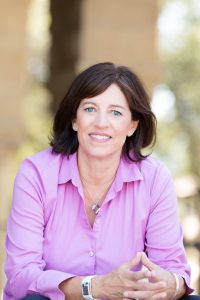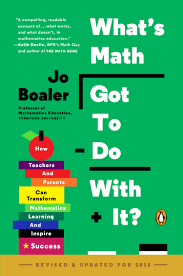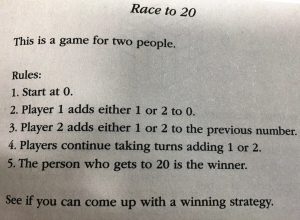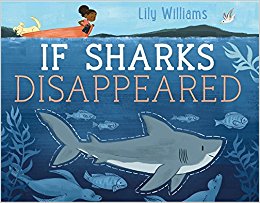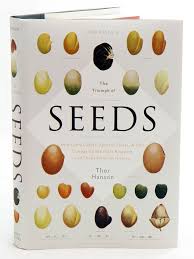
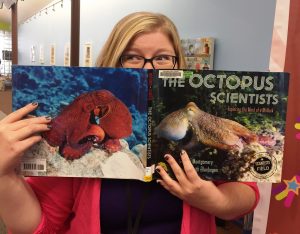 What happens when curious kids take a trip to the library? Magic! Especially if children’s librarian and STEM enthusiast, Erica Eis, is there!
What happens when curious kids take a trip to the library? Magic! Especially if children’s librarian and STEM enthusiast, Erica Eis, is there!
“The reason I love STEM books is because they support school curriculum in fun, engaging ways. And, if you can figure out a person’s interest area, STEM books always pull in the non-readers.”
The Hub took a trip to the Forest Avenue Library to get Erica’s recommendation for great STEM reads and holiday gifts. Erica’s expertise in children’s literature, along with her lifelong interest in science and passion for STEM, makes her the perfect person to recommend titles. Beginning with Pre-K through 3rd grade, this is the first in a two-part blog series.
Pre-K
Something’s Fishy by Kevin McCloskey
from Goodreads: Some fish breathe air and some fish fly, but the most wonderful fish of all turns out to be the one you’ve got at home. In another offering of the beloved Giggle and Learn series, Kevin McCloskey blends science, art, and comedy to reveal the true story behind the common goldfish.
Erica says: “I really like this book because it’s structured like a graphic novel. It’s a great source of information and introduces scientific vocabulary in the areas of ichthyology and marine biology.”
Mix in a little humor, add beautiful illustrations, and find out what makes this book a favorite.
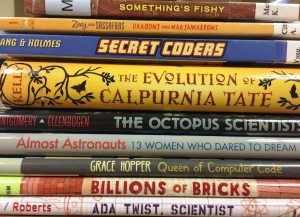 Billions of Bricks: A Counting Book About Building by Kurt Cyrus
Billions of Bricks: A Counting Book About Building by Kurt Cyrus
from Goodreads: Grab a hard hat and all your tools, and get ready for a construction adventure in counting! This clever, rhyming picture book leads readers through a day in the life of a construction crew building with bricks. A brick may seem like just a simple block, but in groupings of ten, twenty, and more, it can create many impressive structures, from hotels to schools to skyscrapers. This is a terrific introduction to counting in quantities for children.
Erica says: “What’s great about this book is that it introduces kids to counting in sequence, like in 2s and 10s, which is the start to teaching multiplication. The book talks about how bricks are used to build, plus it’s in rhyme and meter.”
This is a great introduction to math and engineering.
Ada Twist, Scientist by Andrea Beaty
from Goodreads: Scientist Ada has a boundless imagination and has always been hopelessly curious. Why are there pointy things stuck to a rose? Why are there hairs growing inside your nose? When her house fills with a horrific, toe-curling smell, Ada knows it’s up to her to find the source. What would you do with a problem like this? Not afraid of failure, Ada embarks on a fact-finding mission and conducts scientific experiments, all in the name of discovery. But, this time, her experiments lead to even more stink and get her into trouble!
Erica says: “This book is ever better than Rosie for little ones. Ada is 3 or 4 years old, and it introduces the scientific method. Kids will love it, and parents will relate to the humor.”
This book makes a great bedtime story.
Grades K-3
Grace Hopper Queen of Computer Code by Laurie Wallmark
from Goodreads: Who was Grace Hopper? A software tester, workplace jester, cherished mentor, ace inventor, avid reader, naval leader—AND rule breaker, chance taker, and troublemaker. Grace Hopper coined the term “computer bug” and taught computers to “speak English,” and throughout her life succeeded in doing what no one had ever done before. Delighting in difficult ideas and in defying expectations, the insatiably curious Hopper truly is “Amazing Grace” . . . and a role model for science- and math-minded girls and boys.
Erica says: “This book gives a voice to a scientist who has been erased from history. Younger readers will be intrigued about someone who takes things apart and fixes them. Older readers will recognize the sexism and gender bias.”
The book also has informative back matter, including a timeline and list of other resources.
 Secret Coders by Gene Luen Yang and Mike Holmes
Secret Coders by Gene Luen Yang and Mike Holmes
from Goodreads: Welcome to Stately Academy, a school which is just crawling with mysteries to be solved! The founder of the school left many clues and puzzles to challenge his enterprising students. Using their wits and their growing prowess with coding, Hopper and her friend Eni are going to solve the mystery of Stately Academy no matter what it takes!
Erica says: “This is a great graphic novel, featuring both a girl and person of color, that introduces basic coding. There are puzzles that readers can solve using binary code, or they can wait for the characters to do it.” (Check out the book’s illustration above.)
This book is readable for an elementary kid, but interesting enough to hold a middle-schooler’s attention.
Zoey and Sassafras: Dragons and Marshmallows by Asia Citro
from Goodreads: With magical animals, science, mystery, and adventure — the brand new series Zoey and Sassafras has something for everyone! Easy-to-read language and illustrations on nearly every page make this series perfect for a wide range of ages. In the first book of this series, Zoey discovers a glowing photo and learns an amazing secret. Injured magical animals come to their backyard barn for help! When a sick baby dragon appears, it’s up to Zoey and Sassafras to figure out what’s wrong. Will they be able to help little Marshmallow before it’s too late?
Erica says: “This chapter book is unique because it’s a mix of science and fantasy. The main character uses the scientific method to help each mythological creature. Readers can apply the strategy as they solve their own problems.”
Chapter books like this do a great job of introducing a longer story that’s divided in shorter chapters with lots of illustrations. That gives kids an easy place to stop if they need a reading break.
*******************
These book suggestions are just the very top of the STEM literary peak! Visit Erica and the other librarians at the Forest Avenue location to see their extensive and growing mountain of STEM books. And tune-in next week when Erica recommends books for grades 3-8.
